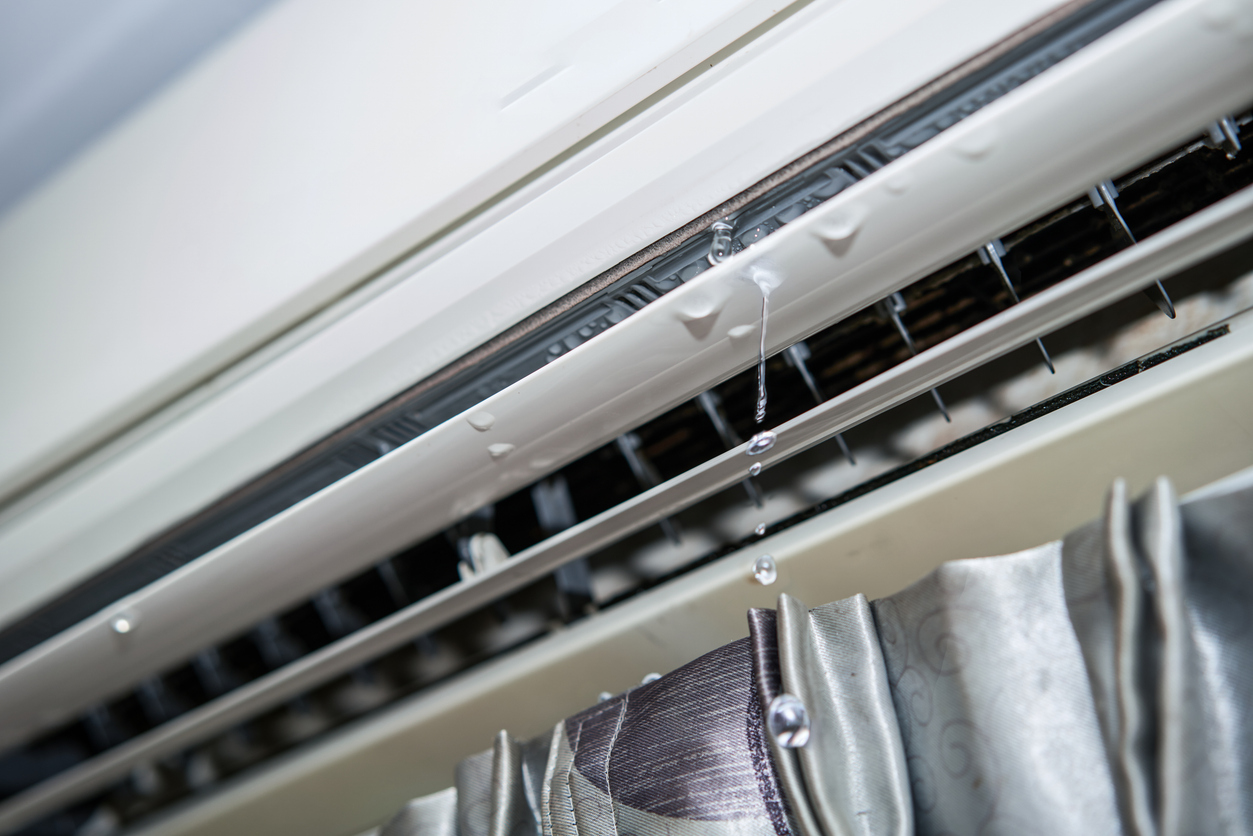
Every good drain includes a drain trap, a curved section of pipe preventing water backflow. But, did you know there’s a drain trap inside your AC system? Your AC drain trap is a surprisingly important air conditioning system design component. As condensate builds up inside your AC unit, that water has to go somewhere. Without the AC condensate drain and its drain trap, you could wind up with unexpected leaks and water damage.
Let’s explore exactly what AC drain traps are and why they are important in your AC installation and maintenance.
What Is an AC Drain Trap?
The AC drain trap is a curved pipe built into the drain line that leads out of your AC condensation pan. Water that builds up in the pan runs down the line. A clogged line can cause the water to back up into the AC. This will cause water damage and potential leaks into the house.
The drain trap is shaped like a U, pointed downward, so that water must flow down and back up again. The intake side of the trap is slightly higher than the outgoing section. It’s easier for water to flow out of the trap instead of back up the drain line. The AC drain traps are usually closer to the AC unit than the end of the drip line to protect the AC unit itself from water backing up. The pool of water in the bottom of the U also protects your home from gasses getting in through the AC condensate drain line.
How It Works
An AC drain trap works on a three-stage system: condensation, water seal, and drainage.
- Condensation Collects: The cooling process keeps the inside of your AC unit cold. Fresh air is cycled through that cold chamber and water droplets condense inside the unit the same as on an icy glass or can. Those droplets collect, fall, and pool up in the condensate pan, which can fill surprisingly fast as your AC functions as a dehumidifier.
- Water Seal: The U shape of the drain trap holds a pool of water in the bottom. That pool of water forms a seal that prevents air from being drawn into the HVAC unit through the drain line, even though “negative air pressure” is being created by the blower fan. The water seal improves the AC’s efficiency and air quality.
- Drainage: Water is collected in the condensate pan and gains enough mass to run down the drain line. It is then caught in the AC drain trap pool until enough water builds up and the excess flows to the approved output location.
Why It Is Important
- Prevents Air Leaks: Any channel out of your AC unit could become an air leak, as the AC creates negative air pressure to function. The water seal prevents air leaks from air being sucked up the AC drain line.
- Avoids Negative Pressure Issues: Your air handler needs to maintain the right amount of pressure. Negative pressure problems occur when air flows back into the unit. The water seal in the AC drain trap prevents that and system malfunctions.
- Prevents Foul Odors: Water seals are also excellent as an odor barrier. Any smells that exist in your AC unit are projected throughout the house. The AC drain trap prevents unpleasant smells from entering your home from the outdoors.
- Protects Against Pests: Lastly, well-maintained AC drain traps are perfect for preventing small pests from using your drain line as a highway to your AC system. Your home will remain closer to pest-free as a result.
How to Maintain It
- Regular Inspection: A functional drain trap is not clogged or blocked. These problems are possible when mineral deposits or debris build up in the drain line, so maintain regular inspections.
- Cleaning: You can easily clean your AC drain trap by occasionally flushing it with white vinegar and water. This clears out algae, mold, dirt, and mineral scale.
- Refill the Trap: After long periods with the AC off or in a dry season, refill your AC drain trap to rebuild the water seal. You can do this by pouring water into your AC’s condensate pan.
- Professional Maintenance: During each AC maintenance visit, ask your professional HVAC technician to inspect and maintain the condensate drain trap. They can flush the trap and ensure it’s functioning, or quickly repair any issues you might notice.
Your AC Drain Trap Performance
The drain trap in your air conditioner may be small. However, it is an essential part of clean and efficient HVAC performance in your home. It helps to remove water buildup and prevent leaks, maintain proper air pressure, and ensure air quality for your entire home. Contact us for regular maintenance and inspection of your AC drain trap during your annual HVAC visit, or if you suspect a problem like a clog or leak.


